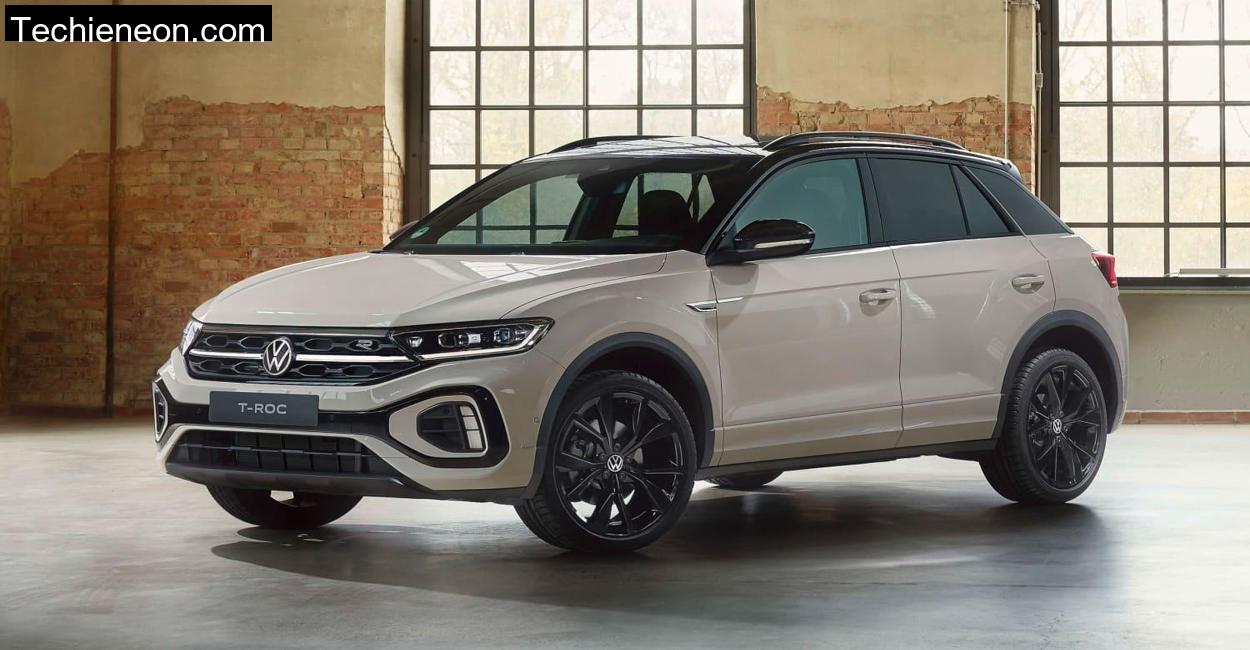Trunk volume: Maximum 1145 liters

For an SUV that doesn’t overpromise on size, the T-Roc makes clever use of its packaging. According to the data, up to 1145 liters of luggage space are available, but only if you skip the optional subwoofer, which otherwise eats into the cargo floor and drops usable space significantly. Our test car came without the extra speaker, and that made a noticeable difference when I threw in my camera gear, drone case, and a duffel bag.
The loading lip is reasonably low, the aperture wide, and with the 60:40 split rear bench down, it transformed into a mobile basecamp. At one point, I even folded the rear seats and slid in a mountain bike without removing the wheels. On narrow forest roads, being able to carry gear without resorting to a roof box is more than convenience, it’s freedom.
These engines are currently offered
Volkswagen keeps its engine lineup wide and calculated. Whether you’re after efficiency or a jolt of performance, the T-Roc caters across the board:
| Engine | Output | Consumption (WLTP) | Price (from) |
| 1.0 TSI | 116 hp | 5.7–6.1 l/100km (Super) | €27,850 |
| 1.5 TSI ACT | 150 hp | 5.9–6.4 l/100km (Super) | €32,955 |
| 2.0 TSI 4Motion | 190 hp | 7.3–7.7 l/100km (Super) | €44,465 (R-Line) |
| 2.0 TDI | 116 hp | 4.8–5.1 l/100km (Diesel) | €31,450 |
| 2.0 TDI DSG | 150 hp | 5.0–5.3 l/100km (Diesel) | €38,805 |
| T-Roc R (2.0 TSI) | 300 hp | 8.5 l/100km (Premium) | €53,140 |
For our test, I drove the 1.5 TSI with ACT (Active Cylinder Management) and the 2.0 TDI, the two engines scrutinized most. And while numbers are useful, real-world roads tell the deeper story.
VW T-Roc with good driving performance
The Schwarzwaldhochstraße (B500), with its endless rhythm of elevation and tight corners, was a good test for body control and response. The 1.5 TSI with its dual-clutch DSG was my companion for the early part of the day. Acceleration is brisk, not explosive, but where the TSI shines is in its balance. With 150 hp, it makes smooth, assured progress without a fuss. The adaptive chassis in our “Style” trim soaked up rough edges from gravel pull-offs and forest cobbles like a bigger car would.
But later that day, when I switched to the 2.0 TDI version, also with 150 hp and DSG,I noticed something interesting. While the diesel has stronger low-end torque (perfect for pulling through steep uphill curves), it growls more when pushed. The soundproofing, especially compared to a Golf, feels basic. At cruising speeds on open roads, it’s composed. But nail the throttle and the agricultural roots show through.
Still, both engines posted credible performance. In test, 0–100 km/h was done in 8.4 seconds for the diesel, 8.6 for the TSI. What matters more in real life, overtaking on a blind country road, felt safe. The diesel hit 60–100 km/h in 5.7 seconds, the TSI in just 4.8. That kind of readiness inspires trust behind the wheel.
Handling-wise, the T-Roc is predictable and capable. Steering is light but accurate, with no dead zone. On switchbacks, especially near Kniebis, the T-Roc never felt overwhelmed. The R-Line trim, with its sportier suspension and larger wheels, does tighten up road feedback, but on our “Style” tester, comfort took priority. I’d pick this over a firmer ride every time, especially on roads with frost heaves and leaf-covered turns.
Prices start at 27,850 euros
Now, here’s where the SUV math begins to complicate. The base T-Roc 1.0 TSI starts at €27,850, which feels competitive for a German-badged compact SUV. But that price is really just the foot in the door.
The sweet-spot 1.5 TSI ACT with DSG? You’re looking at over €32,000. Add some essentials, metallic paint, adaptive cruise, heated seats, upgraded infotainment, and suddenly you’re knocking on the €40,000 door. Our test car? Stickered at €43,025. That’s Golf GTI money.
And then there’s the T-Roc R. A compact bombshell with 300 hp, 0–100 in 4.9 seconds, and the soul of a hot hatch. It’s a beast on paper. But for €53,140, you’re buying exclusivity, and also directly challenging Audi and BMW money. Still, the appeal is undeniable.
Conclusion
The T-Roc left a deeper impression on me than expected. In a landscape as unfiltered as the Black Forest, pretenses fall away quickly. A car either holds together or it doesn’t. And the T-Roc does.
It’s not perfect. The diesel is too vocal, and the price climbs faster than you’d expect. But if you’re after a car that’s compact outside and capacious inside, that rides comfortably yet remains agile, and that blends familiar VW logic with a little edge, then the T-Roc deserves a serious look.
And that’s really what the T-Roc excels at, finding balance. Between price and equipment. Between space and footprint. Between spirited and sensible. It’s the SUV that doesn’t try to be more than it is, and that’s what makes it feel authentic.



Leave a Comment